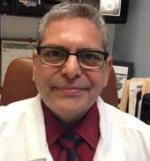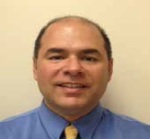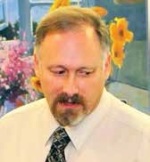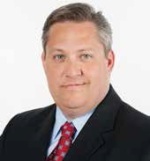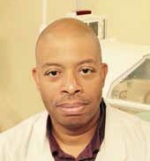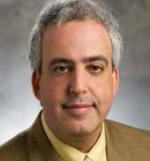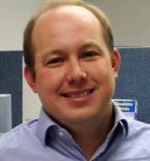From servicing under fire in Iraq to evolving under the ACA, clinical engineers rise while facing many challenges
August 05, 2015
by John W. Mitchell, Senior Correspondent
Hospitals and health systems that are not yet tapping into clinical engineering’s know-how to help control costs and improve outcomes are missing out on a huge opportunity. In some cases, preparing for a career in health care management technology can mean combat experience. Or the battle can be in adjusting to the expectations under the Affordable Care Act (ACA), which ushered in a new era for all hospital ancillary departments. Much is expected from clinical engineering — and it’s not always easy. “Sometimes it seems as if sales people sell the dream, but we service the nightmare,” said Helen Jones, Clinical Engineering Director at Harris Regional Hospital, a Duke Life Point Hospital. Jones works under contract from independent service organization (ISO) Crothall Healthcare.
Her experience is wide ranging: she made the move a decade ago to the hospital in the mountains of North Carolina (where she grew up) from Wake Forest Baptist Health and she has about seen it all. Jones and another health care management technology professional have labored to keep the systems going in an 86-bed hospital that has been in and out of an evolving multi bed hospital system in an environment she labels “capital thin” at times.
“My hospital has always been good about investing in high-end technology, such as imaging. But at times we’ve had to use some real MacGyver duct tape and eBay strategies to supply parts and service to keep equipment like pumps and monitors going,” she explained. However, the hospital has recently joined Duke Life Point, a hospital system with the business model of helping rural hospitals succeed financially and to achieve high quality outcome metrics.
Such hospital consolidations are now the trend in health care, with much expected from health care management technology professionals. Jones said the hospital is now seeing fresh capital flow inform Duke Life Point. She said this should help the hospital make the long-awaited full integration to an electronic health record (EHR) and all the associated clinical engineering connectivity that comes with that transition.
Across the country in Utah, Mike Busdicker, System Director, Clinical Engineering at Intermountain Healthcare, a hospital system with numerous physician and outpatient sites, works just as creatively to bring his operations to the highest level of organizational performance. He and his team are responsible for keeping more than 100,000 items of equipment in the inventory not just operating, but contributing to the success of the organization.
He cites Intermountain’s mission statement (“Helping People Live the Healthiest Lives Possible”) to define his goals and determine his day-to-day work. Such a common and shared cultural mission is widely recognized as a characteristic of high-performing organizations. “Support departments like mine need to understand their role in the redefined environment of the Affordable Care Act.
We are no longer looking for vendors, but instead collaborative suppliers. Under our agreements with collaborative suppliers, it’s a win-win for health care — it’s no longer just about beating each other up on price,” said Busdicker.
As an example, he cited a recently signed 10-year agreement with GE Healthcare. While nondisclosure prevents explaining too much detail, Busdicker said that because GE and Intermountain stepped outside their comfort zones to seal the deal, both were rewarded with a long-term beneficial commitment. But he said the contract sets new standards for the ability of Intermountain to move equipment service levels and provides service contract stability to GE. Such innovative thinking has helped Busdicker save Intermountain $8 million in documented savings over the past three years. These kinds of savings in all departments will be key in helping every hospital adjust to the new payment realities of population management that no longer reimburses for each episode of care. Such a flood of savings in Intermountain’s Clinical Engineering operations is an indicator of the future.
The professionals interviewed were nearly unanimous in their agreement about their changing roles. “The message from the leadership group is that we can’t keep having higher and higher operating costs,” said Curt Rodriguez, Clinical Engineering Manager for Cedars-Sinai, for all equipment except for the operating room. “They are asking us in clinical engineering to manage and control our costs.”
He and his co-Clinical Manager Roberto Torres, Jr., who manages the technologies for the procedure areas (including preoperative, imaging, image-guided equipment, and endoscopic equipment) cited several strategies they have deployed to manage service and parts expense. For example, when they identify a possible new source for open market parts, they will trial the parts in a small number of their machines to see if they perform well. But he stressed that when it comes to life-critical equipment they will not take the risk and they stick to OEM parts.
With more parts players entering the field, Gary Barkov, Manager for Clinical Engineering at several Advocate Health sites, said the quality of third-party parts is getting better. He cautioned that attention to detail about the software version and the replacement part is a must. A few of the experts interviewed repeated this warning. “As equipment ages, it’s necessary to go to the open market when it’s not supported by the OEM.
But it’s really important that the part is a good fit with the version of the software installed on the equipment. It has to match,” he said. Whether or not an OEM is willing to negotiate first call under partnership or shared service contracts mostly seems to hinge on how the purchase of the equipment is negotiated upfront. This pre-sale involvement from the senior clinical engineer was universally cited as the biggest role-changer to help manage expenses for their hospital.
“I can remember times in the past where I have attended user orientation for new equipment and I just knew by the design that it was going to fail,” said Jones from Harris Regional. “If I had reviewed this purchase before it was bought, we could avoid a lot of frustration.” Steve Bowers, Manager of Clinical Engineering at REX Healthcare, which is part of the University of North Carolina Health System, has learned that OEMs will often not release the keys to equipment software unless the sale is contingent upon this access.
“I am one of the people who sign off on equipment purchases. I always make sure we can get the software access. I’ve actually stopped equipment delivery at our door until we get passwords,” he said. “I think OEMs recognize that software can be good service revenue for them if the customer allows it.” He added that the in-house software access also helps to reduce equipment downtime when there is a problem, and helps to update software when upgrades become available.
“We tend to go with vendors who cooperate with us about access to software,” explained Stuart Grogan, Radiology equipment Manager for Wake Forest Baptist Health. “Most of my team has a solid software background learned from installing RIS-PAC imaging components.” He said this is key at a teaching hospital such as his, which deploys a lot of advanced technology. With nearly 5,000 total devices to take care of — almost half imaging — he said that even the most stringent OEMs are starting to relax their policy on customer information sharing. According to most of the sources, they handle between 90-95 percent of service in-house with the health care management technology professionals.
The newer lifesaving technology typically remains the purview of the OEMs. For example, Clint McCoy,an OR Biomedical Engineering Technician III at UNC Health Care under a contract with Aramark, the ISO on the account for 20 years, said that only about 10 percent of their service contracts are covered under OEM agreements. McCoy, who is current president of the North Carolina Biomed Association, oversees two full-time employees and one part-time, to keep 38 operating rooms running smoothly. He said there are 22 total health care management technology professionals, including he and his staff, for the entire hospital.
However, Rob Morey, area vice president for TriMedx, which manages more than 1.2 million devices for its clients, said they typically see a mature HTM program operating with about 70 percent of their expenses able to support insourced services. He also notes that their historical database allows TriMedx to apply a huge base line to determine the quality of after market parts makers and suppliers, to ensure reliability and patient safety.
For Russ Magoon Imaging Service Engineer at Legacy Health and past president of the Oregon Biomedical Association, and Edwin Vasser, Biomedical Equipment Technician III at Advocate Christ Medical Center and Advocate Children’s Hospital, the view from the front line offers a different perspective. “Our director is good about talking to the techs before equipment is purchased,” said Magoon. He also said that while open market parts are an option, some parts should not be substituted from OEM suppliers if possible.
“It’s easy to be penny wise and pound foolish,” he explained. “I’ve seen tubes bought for 50-60 percent less, but fail after six months, instead of the expected life span.” He said they have also had success with shared service contracts, which typically cost a few thousand dollars per room compared to as much as $15,000 for a full service contract. He said the shared contract also allows for faster turnaround when equipment goes down because a PO is not needed to talk to someone at the OEM, which can slow response time. The issue of fast turnaround was also important for Vasser. With the growing role of software and device interconnectivity, there is a growing overlap with the IT department. “As a first responder we have to move fast.
The nursing staff expects their equipment back up as quickly as possible,” said Vasser. “So the traditional 24-hour turnaround time IT is used to isn’t going to accomplish that. We need IT’s help and we need their response time to mirror that of clinical engineering.” He noted that while his shop covers about 95 percent of service in house, sometimes it is cheaper with a flat rate that some of the OEMs offer to let the OEM make repairs. “IT may not have the skill set or processes in place to work on networked medical device systems, so clinical engineering has had the opportunity to expand our knowledge to cover new, IT-like tasks.
We’ve had to become lot more IT-savvy than IT has had to become clinical engineering-savvy, but IT is getting more engaged,” Torres added. Another trend: all but one of the sources reporting that their staffing has remained flat to slightly increasing. And all the sources spoke about the changing skill set now demanded in the field. The hiring managers are seeking health care management technology professionals well versed in computer and software knowledge, in addition to the traditional mechanical skills.
Good interpersonal skills, including being a good listener, are more important then ever. “It’s no longer just enough to be a good bench technician to be successful in this field,” said Jones, with Harris Regional. “Any more, the first thing service people get out is not a screwdriver, but a laptop. It’s more and more becoming about tracing an issue back to a circuit board rather than a component,” said Magoon. This emerging new skill demand is putting a strain on the labor supply pool, noted several of the clinical engineering managers.
As much of the health care management technology professional workforce ages out and retires, the skills required at all levels in the field are evolving quickly. Busdicker, with Intermountain, said that more and more, all of their leadership positions require a master’s degree to be considered for the job. Grogan, at Wake Forest, stated that he is often finding the replacement staff he needs in the ranks of veterans leaving the military. “In one interview I asked a candidate how he would handle the situation if a key piece of equipment went down in the OR and the surgeon was demanding that he get it up and running ASAP,” Grogan recalled. “He told me that he had fixed tanks under fire in Iraq so he was sure he could figure out a way to meet the surgeon’s needs.
I hired him and he’s become one of my best engineers.” There were other trends noted. When asked about their workloads, most interviewed said they have had to develop strategies to keep up with staffing requirements. These tactics include: cross training staff to service multiple types of equipment; allowing flex scheduling; and in some cases adding a second biomed shift in hospitals. Most of the sources also agreed that somewhere between 10-20 percent of their imaging equipment could be considered “old” — meaning the OEM did not support it any longer.
This number was slightly higher for non-imaging equipment, with about 30 percent labeled as “old.” But old does not always mean the equipment cannot be made useful with commitment and creativity.
Her experience is wide ranging: she made the move a decade ago to the hospital in the mountains of North Carolina (where she grew up) from Wake Forest Baptist Health and she has about seen it all. Jones and another health care management technology professional have labored to keep the systems going in an 86-bed hospital that has been in and out of an evolving multi bed hospital system in an environment she labels “capital thin” at times.
“My hospital has always been good about investing in high-end technology, such as imaging. But at times we’ve had to use some real MacGyver duct tape and eBay strategies to supply parts and service to keep equipment like pumps and monitors going,” she explained. However, the hospital has recently joined Duke Life Point, a hospital system with the business model of helping rural hospitals succeed financially and to achieve high quality outcome metrics.
Such hospital consolidations are now the trend in health care, with much expected from health care management technology professionals. Jones said the hospital is now seeing fresh capital flow inform Duke Life Point. She said this should help the hospital make the long-awaited full integration to an electronic health record (EHR) and all the associated clinical engineering connectivity that comes with that transition.
Across the country in Utah, Mike Busdicker, System Director, Clinical Engineering at Intermountain Healthcare, a hospital system with numerous physician and outpatient sites, works just as creatively to bring his operations to the highest level of organizational performance. He and his team are responsible for keeping more than 100,000 items of equipment in the inventory not just operating, but contributing to the success of the organization.
He cites Intermountain’s mission statement (“Helping People Live the Healthiest Lives Possible”) to define his goals and determine his day-to-day work. Such a common and shared cultural mission is widely recognized as a characteristic of high-performing organizations. “Support departments like mine need to understand their role in the redefined environment of the Affordable Care Act.
We are no longer looking for vendors, but instead collaborative suppliers. Under our agreements with collaborative suppliers, it’s a win-win for health care — it’s no longer just about beating each other up on price,” said Busdicker.
As an example, he cited a recently signed 10-year agreement with GE Healthcare. While nondisclosure prevents explaining too much detail, Busdicker said that because GE and Intermountain stepped outside their comfort zones to seal the deal, both were rewarded with a long-term beneficial commitment. But he said the contract sets new standards for the ability of Intermountain to move equipment service levels and provides service contract stability to GE. Such innovative thinking has helped Busdicker save Intermountain $8 million in documented savings over the past three years. These kinds of savings in all departments will be key in helping every hospital adjust to the new payment realities of population management that no longer reimburses for each episode of care. Such a flood of savings in Intermountain’s Clinical Engineering operations is an indicator of the future.
The professionals interviewed were nearly unanimous in their agreement about their changing roles. “The message from the leadership group is that we can’t keep having higher and higher operating costs,” said Curt Rodriguez, Clinical Engineering Manager for Cedars-Sinai, for all equipment except for the operating room. “They are asking us in clinical engineering to manage and control our costs.”
He and his co-Clinical Manager Roberto Torres, Jr., who manages the technologies for the procedure areas (including preoperative, imaging, image-guided equipment, and endoscopic equipment) cited several strategies they have deployed to manage service and parts expense. For example, when they identify a possible new source for open market parts, they will trial the parts in a small number of their machines to see if they perform well. But he stressed that when it comes to life-critical equipment they will not take the risk and they stick to OEM parts.
With more parts players entering the field, Gary Barkov, Manager for Clinical Engineering at several Advocate Health sites, said the quality of third-party parts is getting better. He cautioned that attention to detail about the software version and the replacement part is a must. A few of the experts interviewed repeated this warning. “As equipment ages, it’s necessary to go to the open market when it’s not supported by the OEM.
But it’s really important that the part is a good fit with the version of the software installed on the equipment. It has to match,” he said. Whether or not an OEM is willing to negotiate first call under partnership or shared service contracts mostly seems to hinge on how the purchase of the equipment is negotiated upfront. This pre-sale involvement from the senior clinical engineer was universally cited as the biggest role-changer to help manage expenses for their hospital.
“I can remember times in the past where I have attended user orientation for new equipment and I just knew by the design that it was going to fail,” said Jones from Harris Regional. “If I had reviewed this purchase before it was bought, we could avoid a lot of frustration.” Steve Bowers, Manager of Clinical Engineering at REX Healthcare, which is part of the University of North Carolina Health System, has learned that OEMs will often not release the keys to equipment software unless the sale is contingent upon this access.
“I am one of the people who sign off on equipment purchases. I always make sure we can get the software access. I’ve actually stopped equipment delivery at our door until we get passwords,” he said. “I think OEMs recognize that software can be good service revenue for them if the customer allows it.” He added that the in-house software access also helps to reduce equipment downtime when there is a problem, and helps to update software when upgrades become available.
“We tend to go with vendors who cooperate with us about access to software,” explained Stuart Grogan, Radiology equipment Manager for Wake Forest Baptist Health. “Most of my team has a solid software background learned from installing RIS-PAC imaging components.” He said this is key at a teaching hospital such as his, which deploys a lot of advanced technology. With nearly 5,000 total devices to take care of — almost half imaging — he said that even the most stringent OEMs are starting to relax their policy on customer information sharing. According to most of the sources, they handle between 90-95 percent of service in-house with the health care management technology professionals.
The newer lifesaving technology typically remains the purview of the OEMs. For example, Clint McCoy,an OR Biomedical Engineering Technician III at UNC Health Care under a contract with Aramark, the ISO on the account for 20 years, said that only about 10 percent of their service contracts are covered under OEM agreements. McCoy, who is current president of the North Carolina Biomed Association, oversees two full-time employees and one part-time, to keep 38 operating rooms running smoothly. He said there are 22 total health care management technology professionals, including he and his staff, for the entire hospital.
However, Rob Morey, area vice president for TriMedx, which manages more than 1.2 million devices for its clients, said they typically see a mature HTM program operating with about 70 percent of their expenses able to support insourced services. He also notes that their historical database allows TriMedx to apply a huge base line to determine the quality of after market parts makers and suppliers, to ensure reliability and patient safety.
For Russ Magoon Imaging Service Engineer at Legacy Health and past president of the Oregon Biomedical Association, and Edwin Vasser, Biomedical Equipment Technician III at Advocate Christ Medical Center and Advocate Children’s Hospital, the view from the front line offers a different perspective. “Our director is good about talking to the techs before equipment is purchased,” said Magoon. He also said that while open market parts are an option, some parts should not be substituted from OEM suppliers if possible.
“It’s easy to be penny wise and pound foolish,” he explained. “I’ve seen tubes bought for 50-60 percent less, but fail after six months, instead of the expected life span.” He said they have also had success with shared service contracts, which typically cost a few thousand dollars per room compared to as much as $15,000 for a full service contract. He said the shared contract also allows for faster turnaround when equipment goes down because a PO is not needed to talk to someone at the OEM, which can slow response time. The issue of fast turnaround was also important for Vasser. With the growing role of software and device interconnectivity, there is a growing overlap with the IT department. “As a first responder we have to move fast.
The nursing staff expects their equipment back up as quickly as possible,” said Vasser. “So the traditional 24-hour turnaround time IT is used to isn’t going to accomplish that. We need IT’s help and we need their response time to mirror that of clinical engineering.” He noted that while his shop covers about 95 percent of service in house, sometimes it is cheaper with a flat rate that some of the OEMs offer to let the OEM make repairs. “IT may not have the skill set or processes in place to work on networked medical device systems, so clinical engineering has had the opportunity to expand our knowledge to cover new, IT-like tasks.
We’ve had to become lot more IT-savvy than IT has had to become clinical engineering-savvy, but IT is getting more engaged,” Torres added. Another trend: all but one of the sources reporting that their staffing has remained flat to slightly increasing. And all the sources spoke about the changing skill set now demanded in the field. The hiring managers are seeking health care management technology professionals well versed in computer and software knowledge, in addition to the traditional mechanical skills.
Good interpersonal skills, including being a good listener, are more important then ever. “It’s no longer just enough to be a good bench technician to be successful in this field,” said Jones, with Harris Regional. “Any more, the first thing service people get out is not a screwdriver, but a laptop. It’s more and more becoming about tracing an issue back to a circuit board rather than a component,” said Magoon. This emerging new skill demand is putting a strain on the labor supply pool, noted several of the clinical engineering managers.
As much of the health care management technology professional workforce ages out and retires, the skills required at all levels in the field are evolving quickly. Busdicker, with Intermountain, said that more and more, all of their leadership positions require a master’s degree to be considered for the job. Grogan, at Wake Forest, stated that he is often finding the replacement staff he needs in the ranks of veterans leaving the military. “In one interview I asked a candidate how he would handle the situation if a key piece of equipment went down in the OR and the surgeon was demanding that he get it up and running ASAP,” Grogan recalled. “He told me that he had fixed tanks under fire in Iraq so he was sure he could figure out a way to meet the surgeon’s needs.
I hired him and he’s become one of my best engineers.” There were other trends noted. When asked about their workloads, most interviewed said they have had to develop strategies to keep up with staffing requirements. These tactics include: cross training staff to service multiple types of equipment; allowing flex scheduling; and in some cases adding a second biomed shift in hospitals. Most of the sources also agreed that somewhere between 10-20 percent of their imaging equipment could be considered “old” — meaning the OEM did not support it any longer.
This number was slightly higher for non-imaging equipment, with about 30 percent labeled as “old.” But old does not always mean the equipment cannot be made useful with commitment and creativity.


